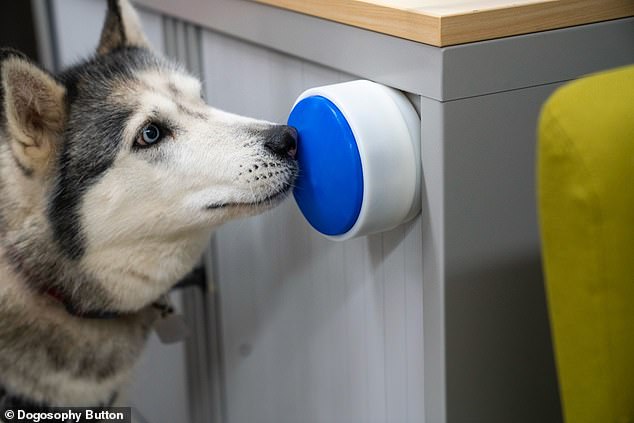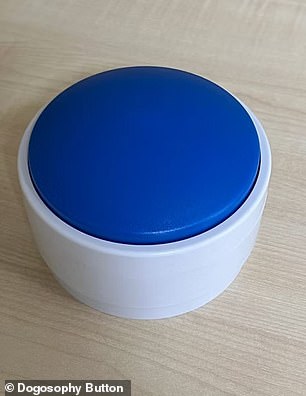Scientists have developed a brand-new way for dogs to earn their reputation as man’s best friend.
The ‘Dogosophy Button’ allows your pooch to control household appliances with a press of a paw.
Developed by scientists at The Open University’s Animal-Computer Interaction Laboratory, this button is designed to let dogs help their owners with more household tasks.
And, according to its inventors, that includes letting your dog pop the kettle on to make you a cuppa.
Users plug their chosen appliance into a receiver, which picks up the wireless button’s signal from up to 40 metres away.
When it detects that the button is pressed, the receiver starts to power the fan, kettle, hoover, or whatever device is plugged in.
Since the receiver powers any device that would normally plug into the mains, you don’t even need expensive smart devices to let your dog take control of the house.
However, recreating your favourite scenes from Wallace and Gromit won’t be cheap, with each Dogosophy Button currently costing £96.

Scientists have created a button that allows dogs to control household appliances, even turning on the kettle to make you a cup of tea
The scientists behind the wireless button say that it aims to solve two problems.
First is the fact that people with service dogs don’t have enough ways for their faithful companions to help them out around the house.
But the second, slightly stranger focus, is the idea that dogs don’t have enough control over the world around them.
Professor Clara Mancini, one of the scientists behind Dogosophy, says that the button will make it easier for dogs to ‘control aspects of the environment in which they live’.
She adds: ‘Dogs live in a world that is not designed with them in mind, which challenges and constrains their daily interactions with it.
‘With the Dogosophy Button we want to begin to change that, by making our shared environments more accessible for dogs and more inclusive for all.’
To that end, the button has been specifically designed with a canine user in mind.
Its bright blue colour is especially visible to dogs, and its large size makes it easy for dogs of all different breeds to use.


The wireless button is connected to a receiver that can detect its signal from over 40 metres away. Users plug their appliance into the receiver, which turns the device on when it receives a signal from the button
The button is sensitive enough that a gentle nudge from a dog’s nose will activate it, but tough enough to withstand the most enthusiastic interactions.
The researchers suggest that pairing the button with a lamp could be a great way of getting your dog to turn out the lights like a canine version of Google Home.
But the only real limit to the number of devices this could control is your creativity and ability to train your dog.
For anyone who struggles to get their dog to sit and stay, teaching them to turn on the washing machine might sound like an impossible task.
However, the researchers say that it is both ‘easier than you think and it can be an enriching activity for you both’.
All that it takes is rewarding the behaviour you want to encourage and ignoring the behaviours you want to discourage.
On its website, the team writes: ‘The methods leverage associative learning, that is, the ability of animals (and humans) to establish associations between co-occurring events.
‘They both employ what is known as positive reinforcement, whereby a desired behaviour is rewarded with something your dog values (e.g. a treat) to increase the likelihood that the behaviour will reoccur, in the same circumstances in which it has been rewarded.’

However, recreating your favourite moments from Wallace and Gromit won’t come cheap, with each button costing £96
While it might seem tricky, research suggests that dogs are able to operate multiple buttons linked to words and even develop an understanding of what those words mean.
In a previous study, scientists from the University of California, San Diego, were really able to ‘speak’ with their owners through soundboard buttons.
The researchers found that dogs responded appropriately to words like ‘play’ and ‘outside’, regardless of whether they were spoken by their owners or triggered by pressing a button.
This suggested that the dogs really knew what the words meant, rather than just responding to associated cues.
So, if you do tell your dog to ‘put the kettle on’, they could really learn what that means.

